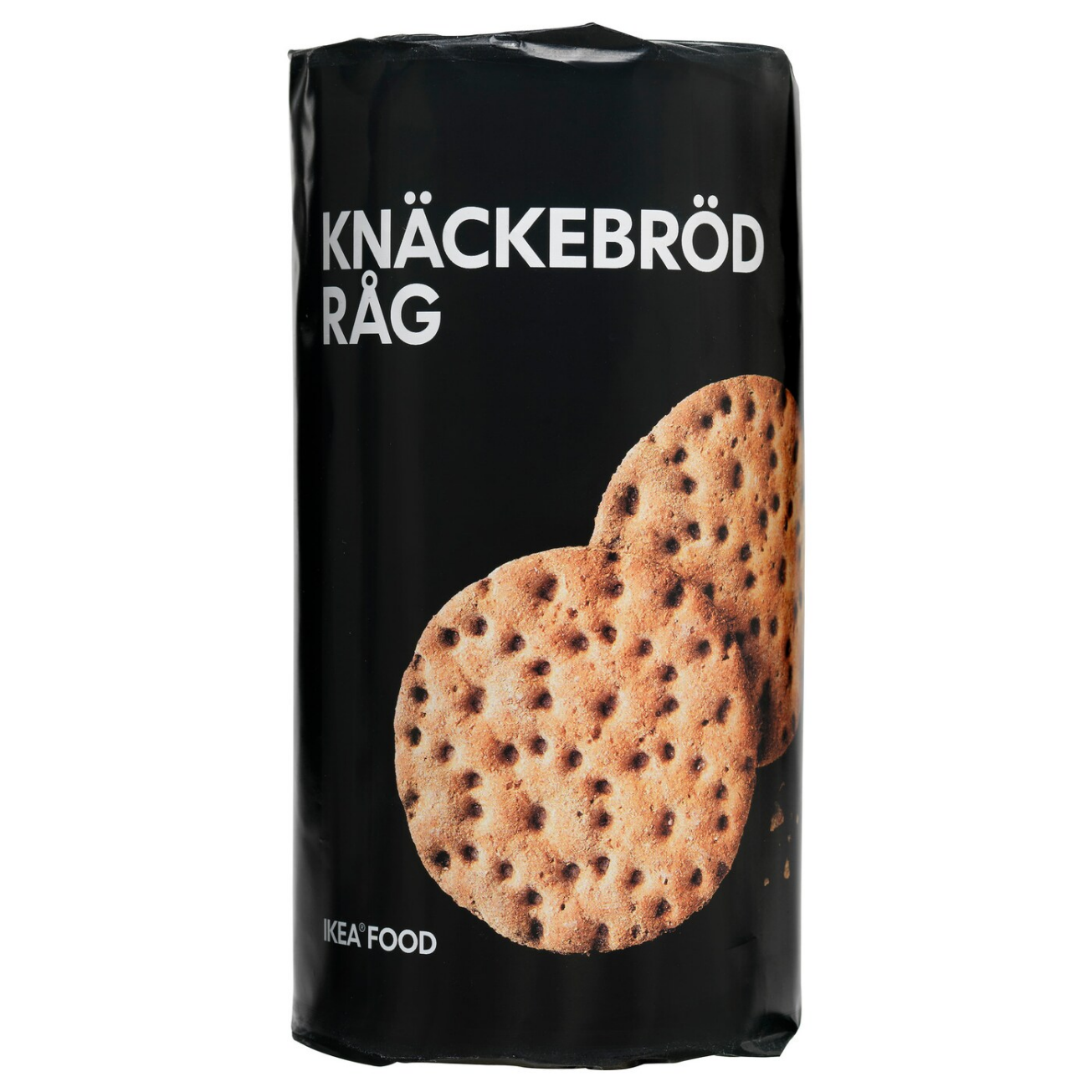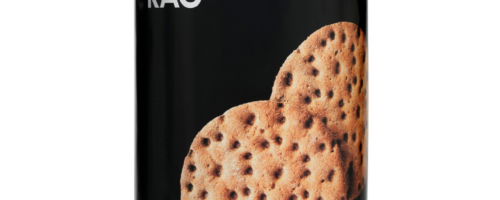
Klintehamn Gotland Sweden
How is it produced?
Knackebrod Rag and Knackebrod Flerkorn
The essence of this paper is an account of two products called Knackebrod Rag and Knackebrod Flerkorn which are 2 types of rye crisp breads. Important information in this report will describe the country where the crisp breads originated, how it is produced and historic significance. The subsequent information will demonstrate mapping of the product and pictures for easy identification of Knackebrod Rag and Knackebrod Flerkorn. The remaining information accounts for the accomplishments of IKEA as a world-wide company that makes the sale of Knackebrod Rag and Knackebrod Flerkorn a success as a Canadian import that is supplied to all 16 IKEA stores. is that the bread is not unique, many companies produce it, however, the relationship with IKEA as a principal partner is. The Knackebrod crisps are simple, but the distribution power of IKEA makes these products easier to sell. The power of the Strategic Plan of IKEA, its Supply Chain Management, Marketing Strategy and Distribution/Logistics demonstrates why the power balance between the seller and IKEA is very favorable for the seller. Concluding remarks will demonstrate the multiple barriers and current economic obstacle’s IKEA face including potential logistical obstacles.
Knäckebröd Historic Origins – How is it produced?
Knäckebröd is traditionally a hard bread baked from only four ingredients: rye flour, yeast or sourdough, salt and water. It is flat and thin with a hole pattern or pits on the surface. Knäckebröd is a durable bread that can be stored for a long time without going bad.
The original way of making knäckebröd sustainable to store, was to dry it by hanging rounds of the bread on drying rods, then the bread was baked with holes in the middle, by letting rounds hang and dry over a hearth. It was left on the hearth and this protected the bread from moisture and pests. The following photos demonstrate how to make the bread the traditional way (The History of Knackebrod, 2023).
The History of Knackebrod (2023. 6. 06 ) https://knackebrodonline.com/en/blogg-0/2023/jun/the-history-of-knackebrod-and-the-history-of-sweden-goes-hand-in-hand/
Country of Origins
The origins of crispbread can be traced back to the early 1500s and originated using the rye grain that could be grown in Sweden’s cold and lean climate. Especially in the central regions such as Strängnäs, Sweden. (The History of Knackebrod, 2023).
Gosur Mapping Systems (2024) https://www.gosur.com/map/sweden/
Since early times to now, there have been many different areas in Sweden as well as the United Kingdom that have reproduced various types of Knäckebröd known as crisp bread.
The relationship between this crisp bread product, and the vendor IKEA is that it that it is made in the town of Klintehamn, on an island just off the Swedish Coast called Gotland (OECD, 2022).
A number of bakeries in this town makes and packages the Knackebrod product exclusively for the IKEA company (The history of knäckebröd and the history of Sweden goes hand in hand,2023).
Describe the supply chain to the store shelf in Canada:
IKEA Supply Chain Management -Supply chain marketing and distribution path of Knackebrod Rag crisp bread to the store shelf of IKEA stores in Canada.
According to Gupta & Palsule-Desai (2011) sustainable supply chain management of IKEA relies on understanding the technical and operational aspects of the practice of collecting, testing, sorting and remanufacturing of returned products. The practice can be classified into three categories: production planning, scheduling, and controlling of inventory management and employing reverse logistics.
IKEA an Insight into IKEA’s Supply Chain Strategy 2021
IKEAs website (IKEA an Insight into IKEA’s Supply Chain Strategy, 2021) implies a perspective on environmental sustainability. Organizations must incorporate environmental impact as an integral part of decision making, not only for the firm but across the entire value chain beginning from the suppliers to the customers. Survey and Statistical Core Methods (SSCM) are concentrated on the entire life cycle of a product from the design, production, distribution, customer delivery, recovery, and re-use. From a broader viewpoint, sustainability includes the environmental management, closed loop supply chains, and triple-bottom-line thinking that integrates profit, people and the planet into the culture, strategy, and operations of this company (Gupta & Palsule-Desai, 2011).
What is the power balance between the producer and seller?
What is the power balance between the producer and seller?
According to the IKEA’s Supply Chain Strategy (2021), the IKEA Group Management Team makes holistic decisions affecting all inter IKEA group entities. They take specific responsibility for transforming IKEA products and delivering on the ambitions described in IKEAs strategic plan. This responsibility secures that the critical business development, innovation portfolios including digital project portfolios are planned and executed in line with the IKEA Direction and connected strategies. The management team’s overall assignment is to lead IKEA above and beyond the current business model. The company’s global sourcing, automation of processes, lean manufacturing, and e-commerce strategies have enabled it to remain competitive in the retail market place and remain a market leader. Through its use of innovative strategies, IKEA has been able to optimize its operations and ensure customer satisfaction.
Can you recommend changes to the system to improve the balance?
Can you recommend changes to the system to improve the balance?
In fairness to IKEA, I think because of its size and position in the marketplace it is easy to target them by underhanded entrepreneurs that could fake some of their information about a product and make it IKEAs fault if the product fails. Franchise operators know at all times they will be supported/ guaranteed by IKEA. I think the balance of power is reasonable. According to Earth.org. (2025) IKEA was considered a beacon of environmental friendliness before June 2020. The furniture retailer was linked with illegal logging in Ukraine and other greenwashing activities after 2020 (IKEA Wood, 2025).
A complaint to IKEA about its packaging of the 2 Knackebrod products from Open Food Facts.org. (2021), reported that the packaging was not environmentally friendly.
Eightception (2025) is an on-line company that helps with business start ups and comments on what various prosperous companies like IKEA face in day-to-day operations. It denotes successes and failures that effect the supply chain and IKEAS bottom line revenues. With regards to the 2 Knackebrod products all of these 18 issues could apply to it if there are any of these disruptions from manufacturing to store.
1. Delivery Issues 2. Eco-Friendly Product Initiatives Issue
3. Labor Shortages and Supply Chain Inefficiency
4. Sustainability Struggles: Green Goals Meet Global Growing Pains
5. Quality Issues 6. Wood Supply Chain Integrity
Breakage Issues 7. Renewable Energy
8. Stability and Safety Recall Issues 9. Alternative Packaging Initiative
10. Problems with Chemical Safety 11. Innovative Practices and Technologies
12. Product Consistency Issue 13. Geopolitical Issues
14. Problems with Durability of Textiles and Upholstery 15. Brexit
17 Unforeseen Circumstances 18 War in Ukraine
Eightception (2025) https://eightception.com/
Conclusions
In conclusion it is recent history that has seen criticisms of IKEAs products. The strength of the global marketing methods, supply chain management techniques, environmental sensitivity, and the logistical expertise of the management teams at IKEA make it difficult not to be a supporter of their methods. Upon understanding global issues as demonstrated in Eightception,2025 (table above) the global marketplace is a challenging place to navigate. The $4.99 package of Knackebrod products belonging to the seller are lucky to have the support of IKEA to vend their product.
References/Resources:
Catalan, M., (2022.07.28) IKEA’s Supply Chain: Growth on Sustainability
https://yorkspace.library.yorku.ca
Earth.com (2025) https://earth.org/greenwashing-companies-corporations/
Eat this Much Inc. (2025) https://www.eatthismuch.com/calories/knackebrod-felkorn-198469
Eightception (2025) https://eightception.com/
Federation of Bakers (2015) https://www.fob.uk.com/wp-content/uploads/2020/02/FS-20-Calories
Gupta, S., & Palsule-Desai, O.D. (2011). Sustainable supply chain management: Review and
research opportunities. IIMB Management Review, 23, 234–245.
https://doi.org/10.1016/j.iimb.2011.09.002
IKEA Group Management (2025) https://www.inter.ikea.com/en /this-is-inter-Ikea-group/
Inter IKEA Systems (2025) https://ikeamuseum.com/en/explore/the-story-of-ikea/great-mi
IKEA an Insight into IKEA’s Supply Chain Strategy (2021)
IKEA Stakeholder Engagement (2025) https://dfreight.org/blog/an-insight-into-ikeas-supply-chain-strategy/
IKEA Wood (2025) https://earth.org/greenwashing-companies-corporations/
OECD (2022), OECD Territorial Reviews: Gotland, Sweden, OECD Territorial Reviews, OECD Publishing, Paris, https://doi.org/10.1787/aedfc930-en. https://www.oecd.org/en/publications/oecd-territorial-reviews-gotland-sweden_aedfc930-en.html
Open Food Facts (2021) https://world.openfoodfacts.org/product/1301485140007/knackebrod-rag-ikea
The history of knäckebröd and the history of Sweden goes hand in hand (2023). https://knackebrodonline.com/en/blogg-0/2023/jun/the-history-of-knackebrod-and-the-history-of-sweden-goes-hand-in-hand/

